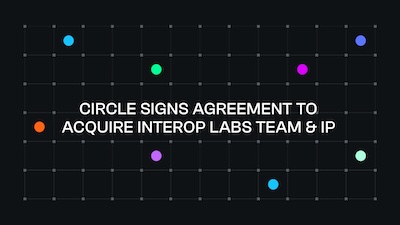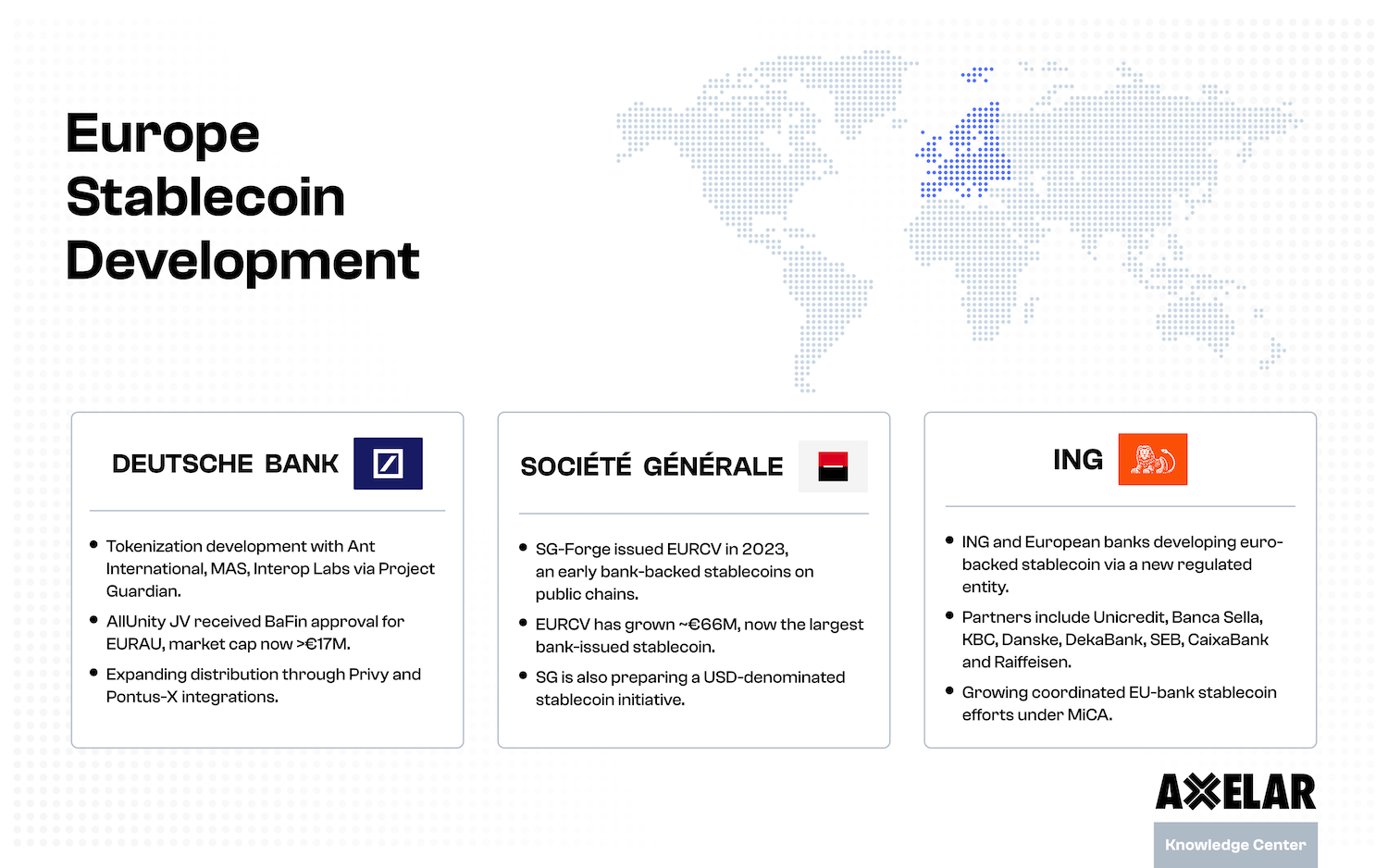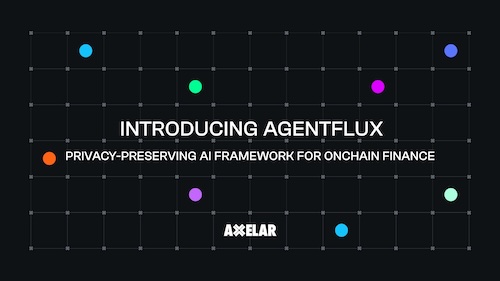Building the Future With Cross-Chain Liquidity
Table of Contents


Despite the widespread growth and adoption of cryptocurrencies and Web3 technology, decentralized applications are still in a nascent stage when it comes to accessibility, even for experienced participants. With limitations such as restricted cross-chain interoperability, scattered liquidity, and a large number of crypto networks and assets in the market, an opportunity exists to bring it all together into a more seamless and accessible ecosystem of assets and applications.
With over 1,000 blockchains and 20,000 currencies available to users, they often work through multiple platforms and blockchain networks to buy, sell, trade and interact with assets. (Source: Earthweb). Each network tends to work independently with its rules and features, restricting cooperation and interoperability. While bridges, liquidity pools and atomic swaps help move assets from one blockchain to another, they are often expensive and prone to exploits. In 2022, cross-chain bridges were exploited for over $2 billion, with prominent names such as BNB Chain, Harmony, Nomad and Wormhole on the list (Source: Beincrypto).
If the current infrastructure is unsafe and inefficient, how do we achieve cross-chain interoperability and accumulate liquidity across chains?

What is cross-chain liquidity?
For any asset, liquidity is the ease with which it can be bought, sold or traded without significantly impacting its price. In toto, if the market has enough active buyers and sellers for the asset, it is liquid. In decentralized finance (DeFi), liquidity exists in pools on individual chains. It can be fragmented, which leads to price impacts called slippage.
Most blockchains operate individually, but cross-chain liquidity can make a difference! Cross-chain liquidity is the ability to convert and move assets across different blockchain networks easily. With cross-chain liquidity, users can conduct transactions, participate in DeFi, and interact with assets across chains without friction.
How do we pool liquidity from different chains? This is facilitated by cross-chain transfers, which help maintain and enhance liquidity in the blockchain ecosystem. They are vital for various use cases, most prominently DeFi applications, which require access to multiple assets and platforms. By enabling cross-chain transfers, users can easily lend, borrow, stake and trade, without the need to comb through different platforms.
Why do we need cross-chain liquidity?
As we discussed above, cross-chain liquidity is essential for a truly seamless user experience. Some of the top advantages of pooling liquidity across chains include:
- Access to assets during market fluctuations: The crypto market witnesses highly volatile periods, which can be due to macroeconomic or crypto-specific factors, as well as the failure of connected institutions like Silicon Valley Bank. At times, major cryptocurrencies may fail completely. Pooling liquidity across blockchains can help users trade seamlessly with more assets, especially stablecoins, and react quickly in volatile situations.
- Reducing single-chain dependency: When users rely solely on one blockchain network, they become vulnerable to potential security breaches, network congestion and regulatory changes that could negatively impact the platform. Cross-chain interoperability helps mitigate these risks, as it lessens the impact of any issues affecting a single blockchain.
- Improved price discovery in DeFi markets: In a fragmented ecosystem, where liquidity is isolated within individual blockchain networks, price discovery can be inefficient, leading to price discrepancies and increased slippage. Connecting different liquidity sources can promote more efficient price discovery across DeFi markets.
- Greater innovation and development opportunities: As different blockchain platforms possess unique features, strengths and capabilities, their interconnectivity can lead to new and innovative use cases. When cross-chain liquidity is accessible, developers can leverage the strengths of multiple networks to create more efficient, secure and scalable applications.
- Cross-chain swaps: With cross-chain swaps and accumulated liquidity, users can access onramps that are as easy to use as centralized exchanges, facilitating seamless asset transfers between different blockchain networks.
How does cross-chain liquidity work?
Cross-chain liquidity works by enabling the maintenance of asset liquidity through cross-chain transfers. There are a variety of interoperability mechanisms that are used across the ecosystem, the most prominent of which are:
Atomic swaps: Decentralized, peer-to-peer exchanges allowing users to directly swap cryptocurrencies from different blockchains without intermediaries or centralized exchanges. They use cryptographic techniques, like hash time-locked contracts (HTLCs), to ensure that both parties fulfill their obligations in the exchange. If the conditions are met within the specified time, the assets are exchanged; otherwise, the swap is canceled.
Liquidity aggregators: Platforms that pool liquidity from various decentralized exchanges (DEXs) and liquidity pools, allowing users to access multiple sources of liquidity and execute cross-chain transactions with minimal slippage. When users submit their orders to a liquidity aggregator such as 1Inch or ParaSwap, they search for the best available prices and liquidity sources across the connected networks.
Interoperability protocols: Platforms that facilitate communication and asset transfers between blockchain networks. These interoperability protocols establish secure connections between networks, allowing for the efficient transfer of assets and information. For example, Axelar enables cross-chain transfers across prominent chains such as Ethereum, BNB Chain, Arbitrum, Avalanche, Osmosis and Fantom.
Cross-chain liquidity pools: Cross-chain liquidity pools allow users to deposit assets from different chains to provide liquidity and earn yield in return. With these pools, users can participate in yield farming or liquidity mining activities across chains while creating a more connected ecosystem. Here is a list of liquidity pools for assets bridged cross-chain via Axelar.
Challenges in cross-chain transfers
Even though different mechanisms are available for cross-chain transfers, cross-chain liquidity infrastructure is at an early stage of development and adoption. With inherent differences and complexities between chains, there are specific challenges that the current protocols face, such as:
Differing security models
Blockchain networks employ various security models to maintain the integrity and safety of their platforms. For instance, some networks use proof-of-work (PoW) models, while others use proof-of-stake (PoS) or delegated proof-of-stake (DPoS). These differing security models can pose challenges for cross-chain transfers, as they have varying levels of vulnerability to attacks or require different levels of trust between participants.
Varying transaction finality
Transaction finality refers to the point at which a transaction is considered irreversible and permanently recorded on the blockchain. Different networks can have different levels of transaction finality, with some offering instant finality while others may require multiple confirmations before a transaction is considered final. Differences in transaction finality can lead to delays and complexities in cross-chain transfers, often leading to significant wait times for certain chains.
How Axelar is creating an ecosystem for cross-chain liquidity
With Axelar and its unique cross-chain offerings, developers, platforms and users can achieve cross-chain interoperability. Axelar’s General Message Passing capability is at the helm, enabling developers to call any function on any other connected chain. In GMP’s context, “function” includes both smart contracts at the application layer (as on EVM chains) and logic built at the protocol layer (as on Cosmos chains).
With GMP, while developers can utilize the potential of cross-chain transactions with over 30 chains over a highly secure interoperability network, users can interact with assets, applications, and platforms on top blockchains in just a single click.
Since its launch on mainnet last year, GMP has been employed by various platforms with diverse offerings. One is Squid Protocol, which utilizes Axelar's General Message Passing capabilities to route liquidity cross-chain and facilitate cross-chain swaps. It does this via smart-contract calls across multiple chains. With Squid and Axelar, users can easily swap tokens from one blockchain to another on a single platform.
Conclusively, cross-chain liquidity is imperative to build the future of interoperable applications and promote an overall healthier ecosystem. Axelar currently supports 30+ blockchains, including Avalanche, Binance, Ethereum, Fantom, Moonbeam and Polygon, with multiple new integrations on the way. Follow us on Twitter to stay updated.
Interested in building with Axelar? Check out our docs on General Message Passing to know more, and reach out to us on Axelar Discord for any questions.


